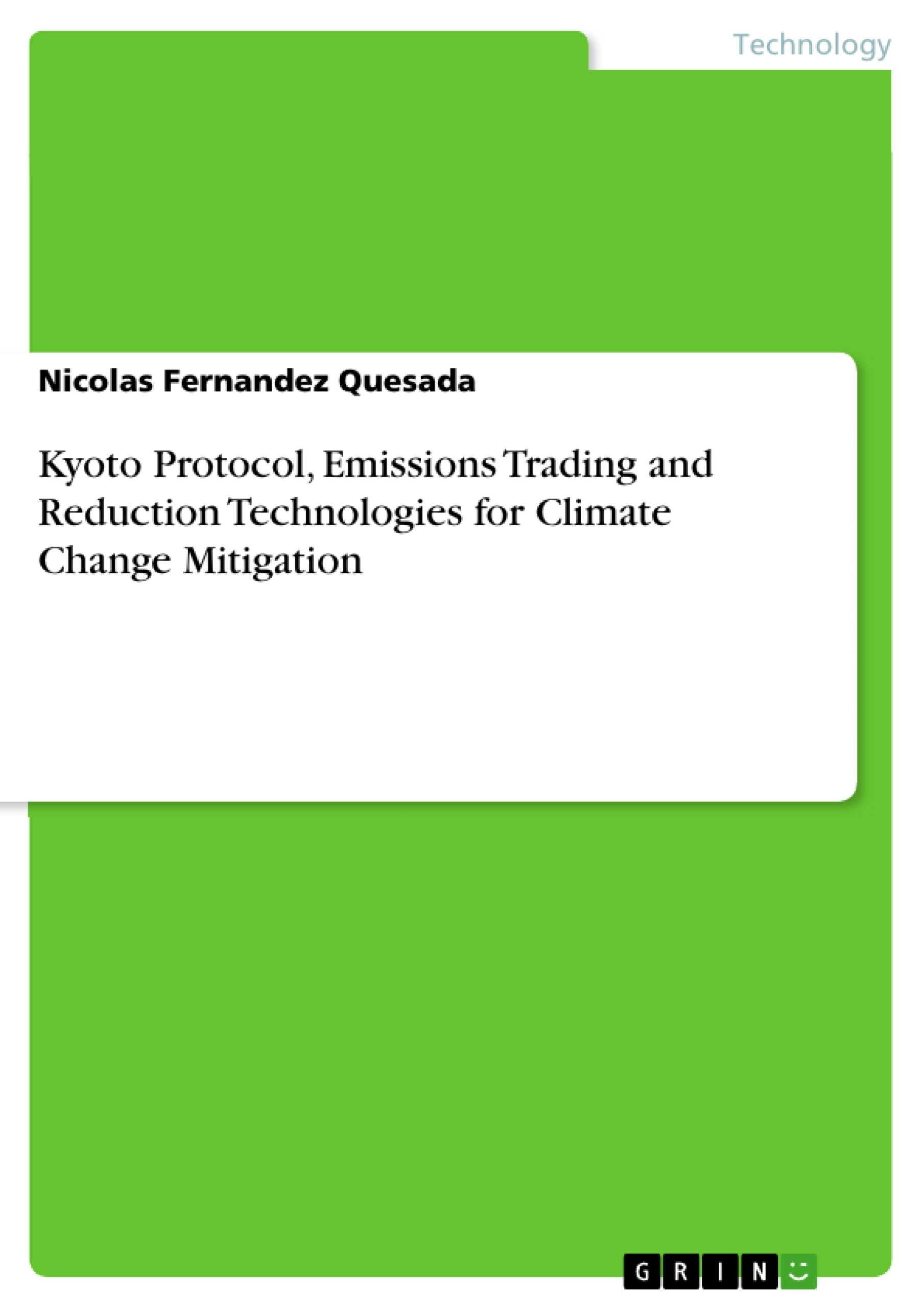Global warming is now universally accepted as being the greatest environmental threat to mankind in the current century. The impacts are staggering. Antarctic ice is thinning at increasingly rapid rates, with correspondingly massive influxes of fresh water into the world’s oceans. All these changes are due mostly to human activities, particularly in raising the levels of CO2, a major greenhouse gas (GHG). Atmospheric concentrations of CO2 have risen 35% since the Industrial Revolution. This increase is primarily due to anthropogenic activities such as the burning of fossil fuels and deforestation. Reducing the rate of GHG emissions will be an enormous challenge for everyone throughout the world which must be fought on many fronts. This work broadly analyses the main issues and subjects concerning several devices and laws for climate change mitigation.
Chapter 1: Climate change and Green House Gases Emissions
Chapter 2: Kyoto Protocol and GHG emissions reduction
Chapter 3: Emissions trading
Chapter 4: GHG emissions estimation and inventory
Chapter 5: GHG emission reduction technologies
Inhaltsverzeichnis (Table of Contents)
- Foreword
- Chapter 1: Climate change and Green House Gases Emissions
- Introduction
- World scenario on GHG emissions
- Key drivers of emissions from energy use
- Energy supply sector
- SMEs and GHG emissions
- Chapter 2: Kyoto Protocol and GHG emissions reduction
- Introduction
- The Protocol
- Flexible mechanisms
- Chapter 3: Emissions trading
- Introduction
- Basic types of emissions trading programs
- Other features of emissions trading programs
- Implementation issues
- Chapter 4: GHG emissions estimation and inventory
- Introduction
- GHG inventory concepts and objectives
- Estimation of GHG emissions from industrial processes and product use
- GHG estimation methods
- Emission estimation for facilities
- Emission factors
- Estimation of GHG from the energy sector
- Categorization of sources
- Chapter 5: GHG emission reduction technologies
- Introduction
- GHG reduction technologies
- How energy efficiency can lead to CO2 reduction
- Barriers
- Energy efficiency
- GHG reduction technologies for industries
- Residential, institutional, and commercial buildings (infrastructure sector)
- Water heating
- GHG reduction technologies for the transport sector
Zielsetzung und Themenschwerpunkte (Objectives and Key Themes)
This work provides a comprehensive analysis of the key issues and subjects related to climate change mitigation. It aims to provide insights into the main devices and laws designed to address this critical environmental challenge.
- The causes and consequences of climate change, particularly focusing on greenhouse gas emissions.
- The role of international agreements, such as the Kyoto Protocol, in mitigating climate change.
- Various methods for estimating and managing greenhouse gas emissions from different sectors, including industry, transportation, and buildings.
- The importance of energy efficiency and the implementation of GHG reduction technologies in different sectors.
- Challenges and opportunities for reducing greenhouse gas emissions in developing countries.
Zusammenfassung der Kapitel (Chapter Summaries)
Chapter 1: Climate change and Green House Gases Emissions focuses on the critical global challenge of climate change and the role of greenhouse gas emissions in exacerbating this problem. The chapter explores the trends in global greenhouse gas emissions, highlighting the key drivers of emissions from energy use and the importance of reducing emissions from the energy supply sector, particularly within the SME sector.
Chapter 2: Kyoto Protocol and GHG emissions reduction examines the Kyoto Protocol, an international agreement designed to reduce greenhouse gas emissions. The chapter discusses the Protocol's objectives, key provisions, and innovative mechanisms for achieving compliance with emissions reduction commitments. It emphasizes the importance of flexibility mechanisms, including international emissions trading, the Clean Development Mechanism, and Joint Implementation, in facilitating cost-effective emission reductions.
Chapter 3: Emissions trading delves into emissions trading, a market-based approach to reducing greenhouse gas emissions. The chapter examines the different types of emissions trading programs and the key design and implementation issues that must be considered for effective program development. It provides a comprehensive overview of the rationale for emissions trading and its potential to reduce compliance costs while achieving emissions targets.
Chapter 4: GHG emissions estimation and inventory explores the critical role of greenhouse gas emissions estimation and inventory development in addressing climate change. It discusses the concepts and objectives of GHG inventory development, outlining the various methods used to estimate GHG emissions from industrial processes, product use, and the energy sector. The chapter also provides detailed insights into the different approaches for calculating GHG emissions using emission factors and mass balance methods.
Chapter 5: GHG emission reduction technologies examines the various technologies and strategies available for reducing greenhouse gas emissions. It highlights the importance of energy efficiency as a crucial tool for mitigating climate change and analyzes the barriers to adopting and implementing these technologies, particularly in developing economies. The chapter also explores specific GHG reduction technologies in different sectors, including industry, transportation, and buildings, and emphasizes the importance of sustainable practices and behavioral changes to reduce energy consumption.
Schlüsselwörter (Keywords)
Climate change, greenhouse gas emissions, Kyoto Protocol, emissions trading, energy efficiency, GHG reduction technologies, sustainable development, developing countries, industrial processes, transport sector, buildings, SME sector.
- Quote paper
- Nicolas Fernandez Quesada (Author), 2013, Kyoto Protocol, Emissions Trading and Reduction Technologies for Climate Change Mitigation, Munich, GRIN Verlag, https://www.grin.com/document/230731




